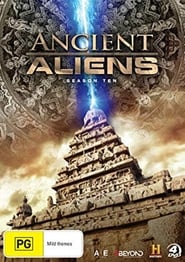

With each arp corresponding to one of the patch’s two sound layers, it’s easy to maintain the character of the foundation patch, yet add more subtle rhythms and pulses by triggering a staccato or legato pattern.Įach arp has its own sequencer, so you can really go to town enhancing the interplay by muddying the sound, speed, octaves and direction.
#Watch forbidden world online Patch#
Results will vary, and that’s exciting.įorbidden Planet’s twin arpeggiators can be used to craft delicate up/down ripples through the selected patch and when used in tandem can breathe new life into static sounds. Using the pop-up Filter section provides a swift way to capture and bottle those sweet spots, work out gated rhythms with the Step LFO option, as well as the tantalising invitation to apply an envelope to the filter cutoff, allowing the automation of its movement with each note. While many are ready to go, self-shifting themselves into being a swirling sound design canvas (particularly those in the FX and Drones category), it would be foolish to neglect the wealth of filter shaping control available. It’s clear that a large swathe of these patches are solid from the outset, and designed to be dense, multi-charactered tension and drama-builders. One of the best things about traversing this deep well of sound options is a nifty auto-audition feature, playing a short motif with this currently hovered-over patch, this saves a lot of time. On the Browse page, we see the eight main folders – consisting of Bass, Drones, FX, Leads, Pads, Poly Synths and a stack of pulsing Arpeggiator-aimed ripples.

The big beast of the sound design world, this is the synth-universe’s Starship Enterprise.įorbidden Planet neatly locks in step with Opus’ cleanly organised pages. With a motion-based approach, the wealth of pads, shifting leads and more on offer here is astronomical. Within Forbidden Planet are 645 of said mouth-watering patches and a detailed workstation for sculpting and contorting these forms into something entirely new. Harnessing EastWest’s adept Opus engine, they realised a synth that draws on a rich well of instrumental texture. The fundamental concept for Forbidden Planet began when producers Doug Rogers and Nick Phoenix elected to deviate from the usual oscillator-leaning approach and instead work towards building a hybrid beast, melding sound layers from acoustic sources, orchestral instruments, choirs and a range of deftly curated sound effects. All in all, there’s a whole new multiverse to discover. There’s also a trove of finer-detail shaping abilities here, like the deep levels of modulation control, and a colourful arsenal of rhythmic options on hand. Unlike traditionally genre-aligned packages, EastWest’s innovative new engine allows for a greater array of sonic control, with delicate morphing between multiple layers paramount to the engine.


 0 kommentar(er)
0 kommentar(er)
